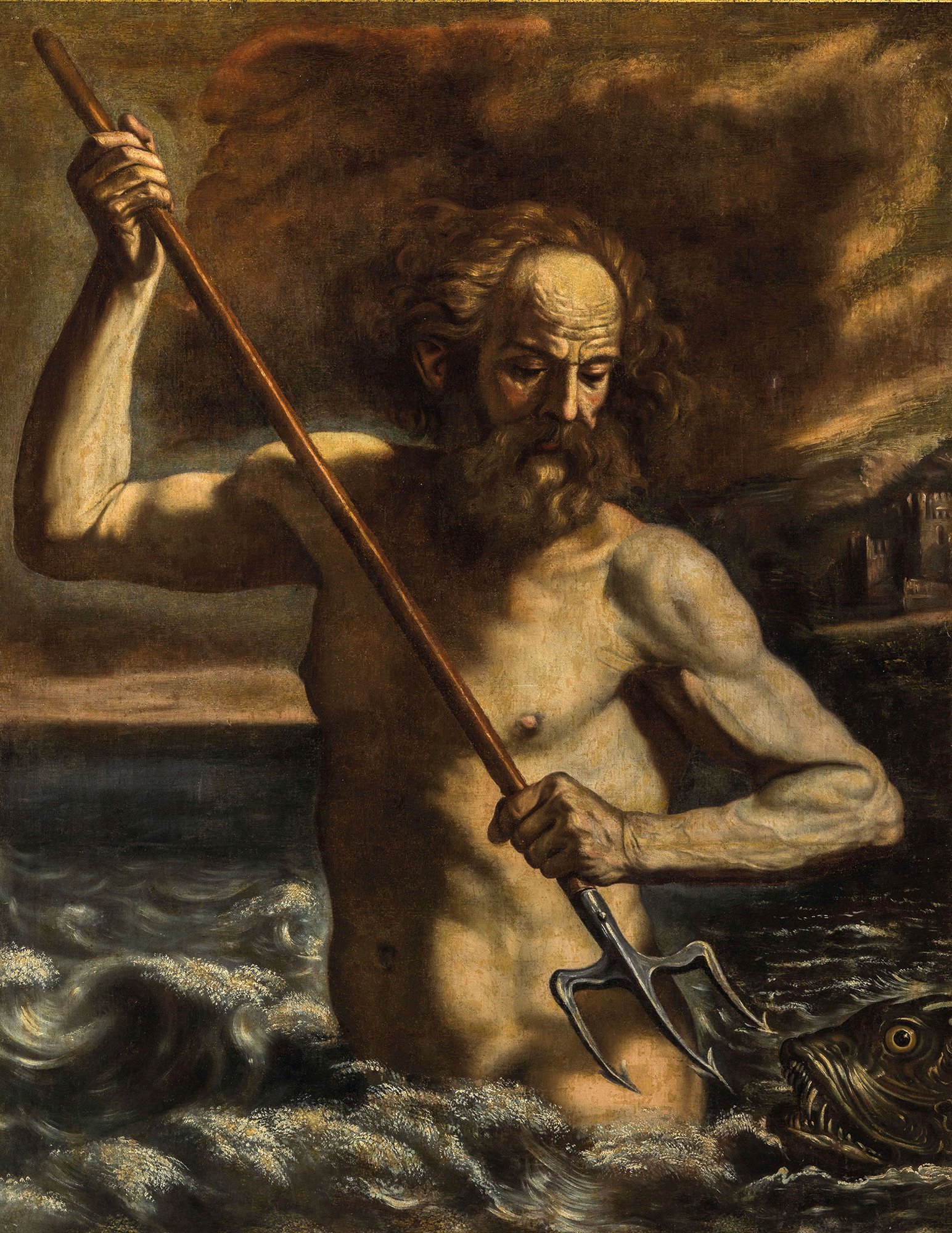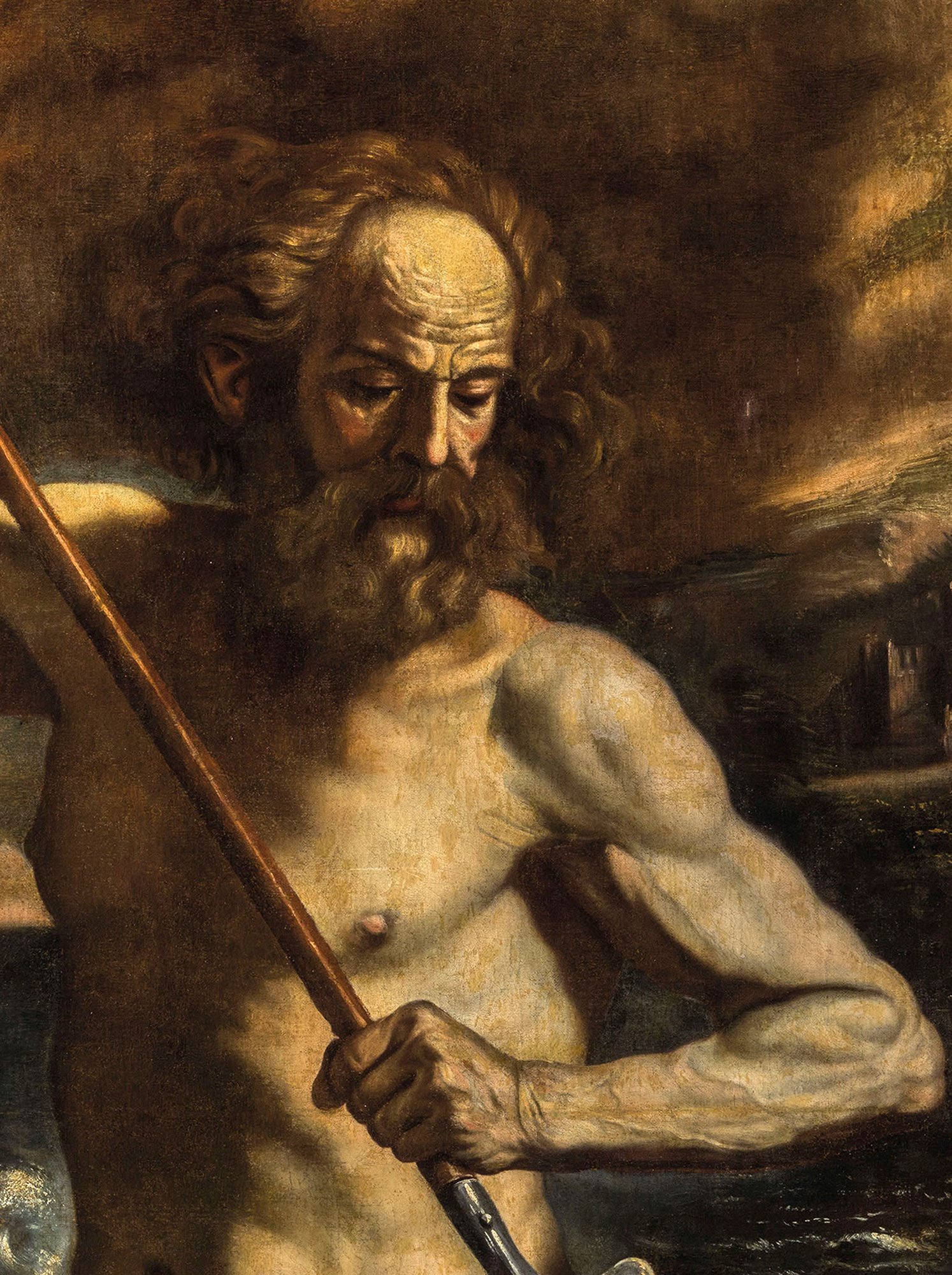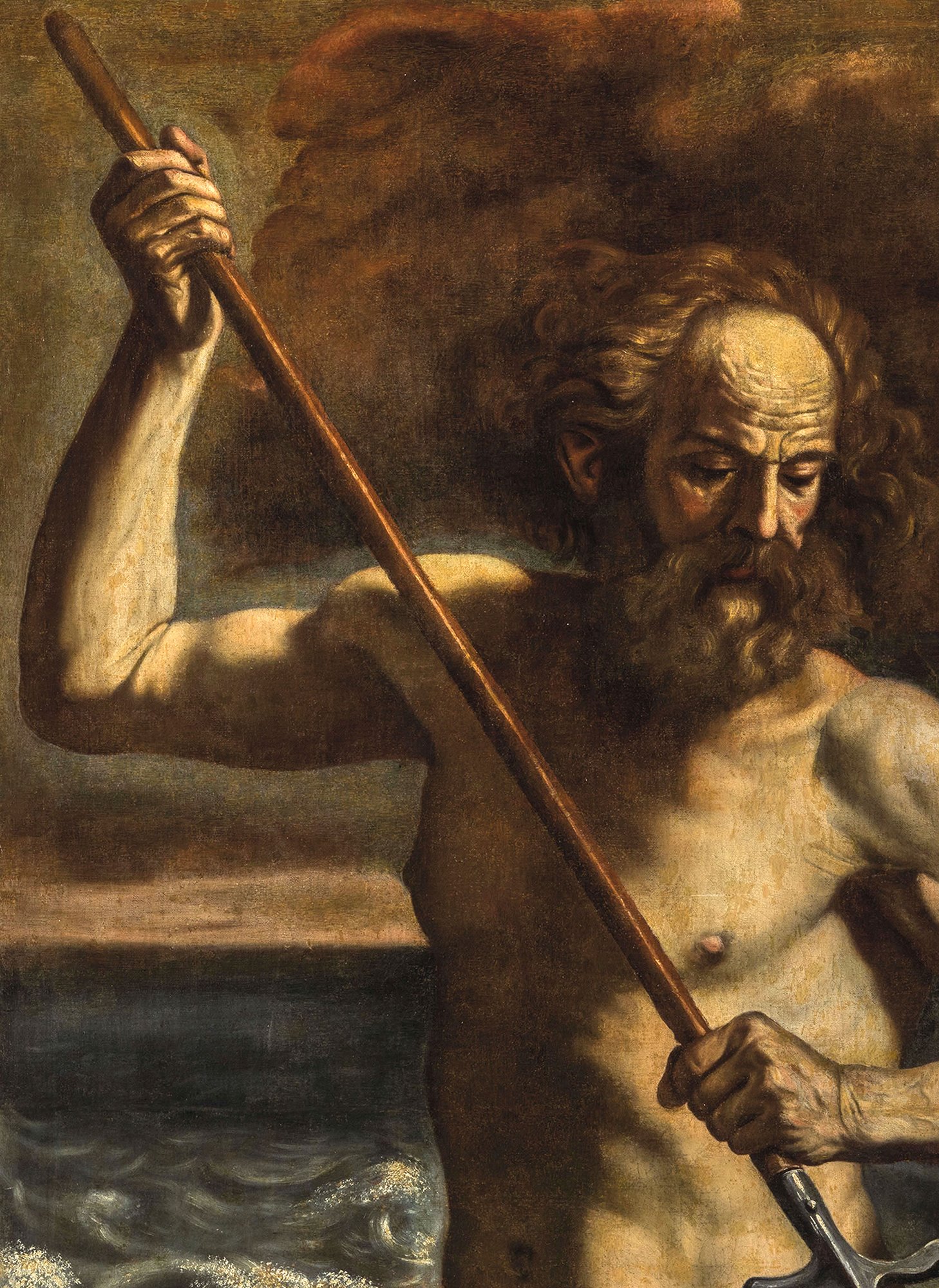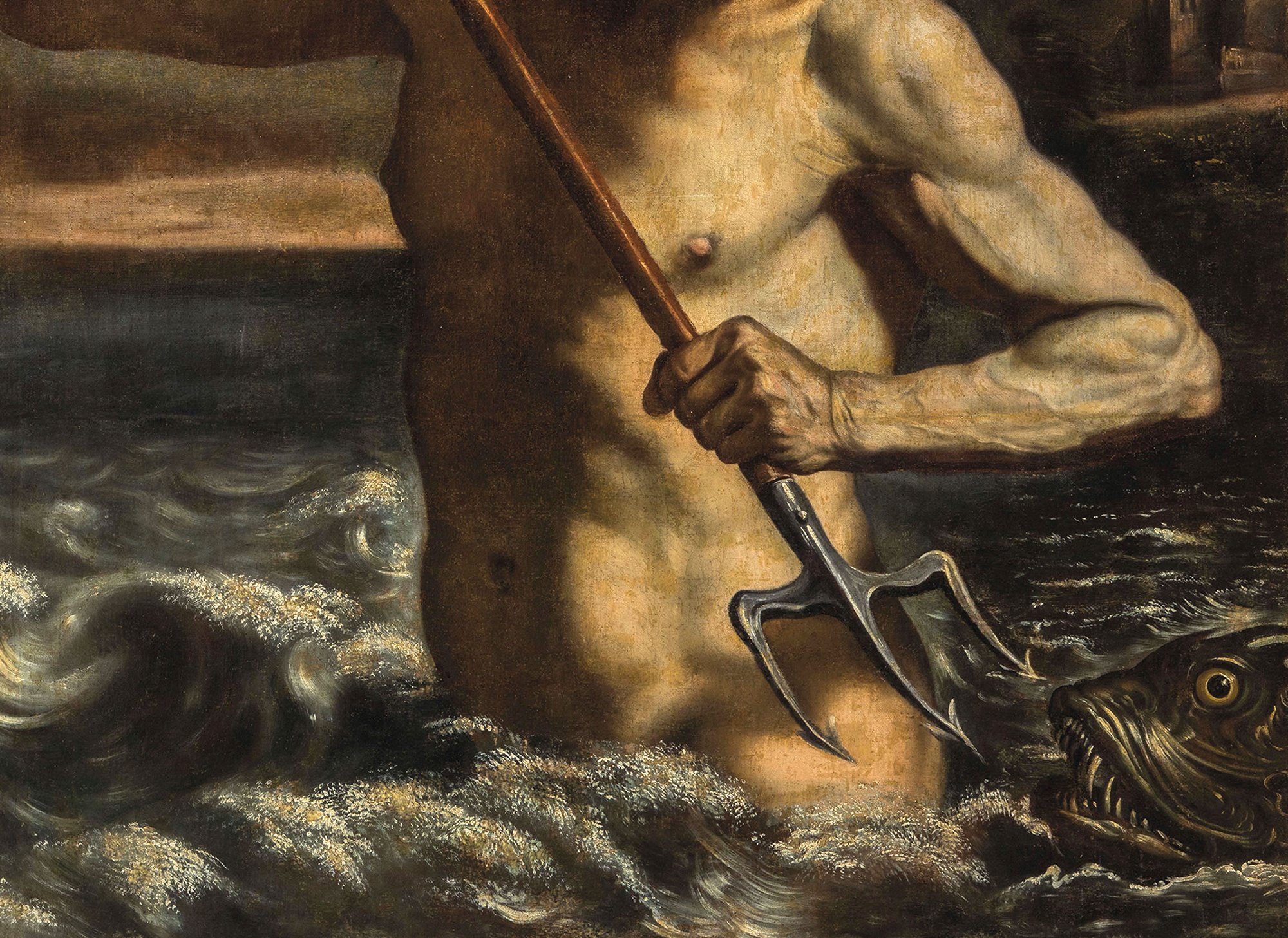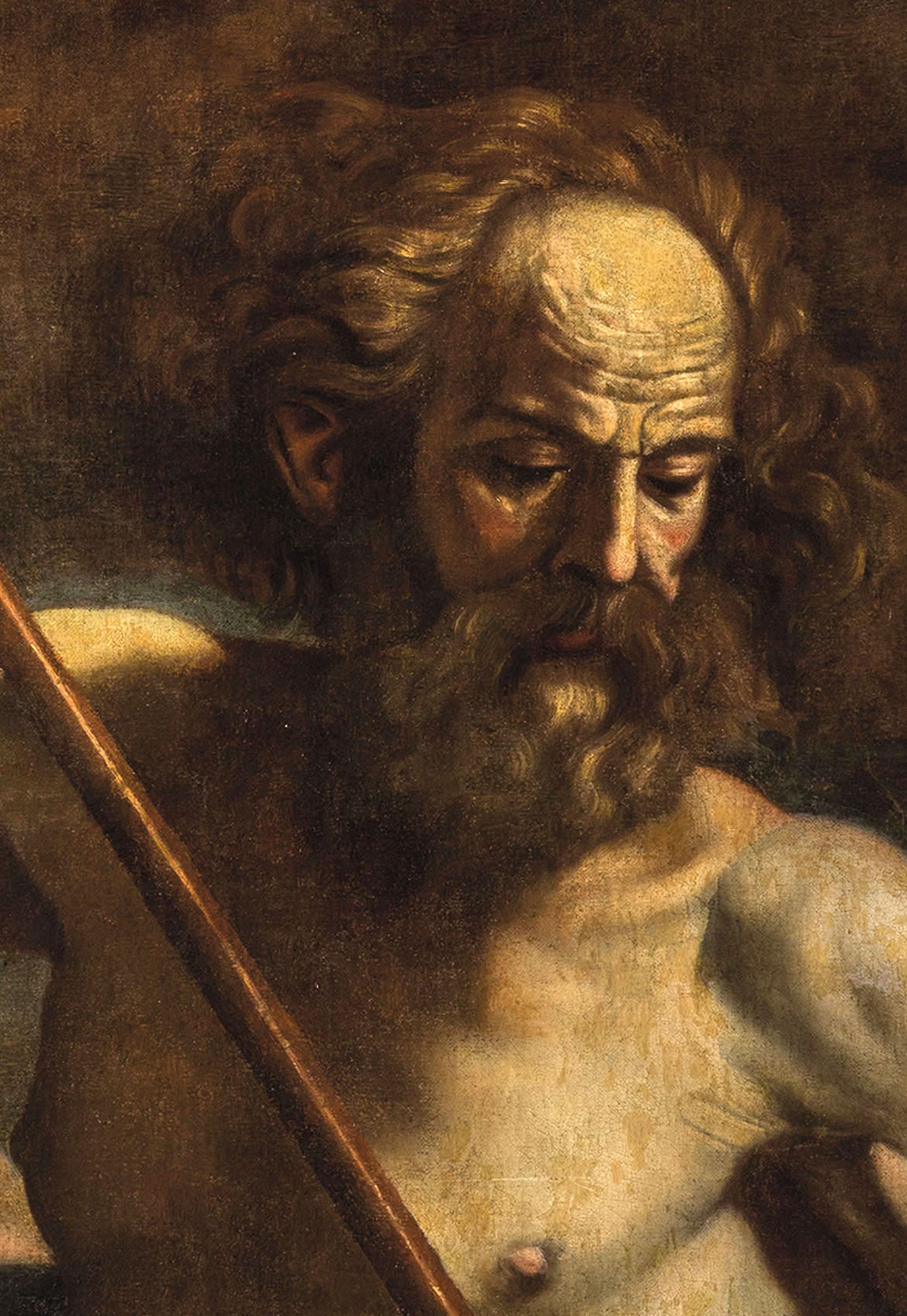Giovanni Francesco Barbieri, detto Il Guercino (Cento 1591 – Bologna 1666), bottega
Giovanni Francesco Barbieri 'Il Guercino' (1591–1666), workshop, Poseidon
Giovanni Francesco Barbieri, known as Il Guercino (Cento 1591 - 1666 Bologna), workshop
The God Poseidon
142 x 110 cm.
Framed 157 x 126
Provenance:
Monaco, Hampel Kunstauktionen, Old master, 19 September 2013 lot 559 (as Giovanni Francesco Barbieri known as Guercino)
Literature:
N. Turner, The Paintings of Guercino A revised and Expanded Catalog raisonné, Rome 2015, p. 476, n. 188 (as a workshop work from a lost original of 1632)
Bibliography:
- Nefta Barbanti Grimaldi, Il Guercino, Cento, 1968, p. 96, plate 172 (see in detail)
- Luigi Salerno, The paintings of Guercino, Rome, 1988, p. 425, n. 378 (here a painting on the same theme from Christie's 1963 auction, lot 101, is considered a workshop work with approximately the same size).
The mighty mythological figure, the great God of the seas Poseidon (Neptune for the Roman phanteon), stands life-size statuary, three-quarter portrait in the waves.
While the upper body follows a twist to the left, the head turns its gaze from the opposite side, downwards, towards a sea creature emerging from the water, trying to hit it with the trident. In the left part of the image, the sea surface moves towards the horizon with a bundle of clouds only dimly lit by an evening sky, almost night. His face is framed by floating, slightly wavy hair, with a high forehead and wrinkles that line his forehead.
The lighting, coming from above, outlines the figure thanks to an intense play of chiaroscuro, where the muscle bands, tendons and veins of the forearms appear prominent, while the left side of the body remains in shadow. This particular light effect in the moonlight produces an atmosphere of strong dramatic effect, further emphasized by the suggestion of a slight reddish halo surrounding the divinity, as if coming from the clouds.
From an attributive point of view it is interesting to illustrate the story that accompanies this important painting.
The work was first studied by the British historian Sir Denis Mahon who, in 1989, assigned it, along with two other well-known versions, to the master's workshop.
It was later analyzed, in June 2013, by Nicolas Turner in an accurate written report (issued in copy). In this analysis, the historian came to the conclusion that the present painting would be an original created by Guercino, previously known in two less defined scholastic versions. One of the versions is published in Nefta Grimaldi's 1968 work on Guercino at plate 172 (Pozzi Collection, Novara): from a comparison it can easily be seen that the quality of the present painting is far superior to that published there. The other with Christie's London, at the beginning of the 1960s, whose current location is unknown.
Compared to the other two known variants, our work shows a clearly superior and extremely qualitative brushstroke that can be attributed to the hand of the master himself.
Guercino's touch would be evident in the softness of the figure's contours, especially where the shadowed left side profile of Neptune's chest contrasts with the horizon and the sea behind him. The variety of the brushstroke is impressive, smooth in the sky and in the areas of the figure's complexion, where it has been built in many layers, and robust in the bold mixture of hair, beard and the interruption of the waves. Furthermore, the conception of the figure, with the muscular Neptune seen against a rough sea and an almost fiery sky, is typical of Guercino. A reflection of the painter's creative imagination are the menacing clouds that cast the entire scene into semi-darkness, the elegantly splashed waves and the sense of theater in the graceful movement of the figure as his trident diagonally cuts the pictorial space into two triangles.
However, returning to Turner's initial writing, he recognized that some details - such as the fish, the trident and perhaps the architecture in the background - could have come from the hand of his brother Paolo Antonio Barbieri, often his collaborator.
Turner's opinion should be compared to that of another distinguished scholar, Sir Denis Mahon (London, dated 7 June 1989) who instead assigned it to the master's workshop.
Out of attributive caution we keep the painting as a work of Guercino's workshop, leaving open the hypothesis that, on the basis of the extraordinary quality and expressive strength, the great master may have probably taken part in the composition.

